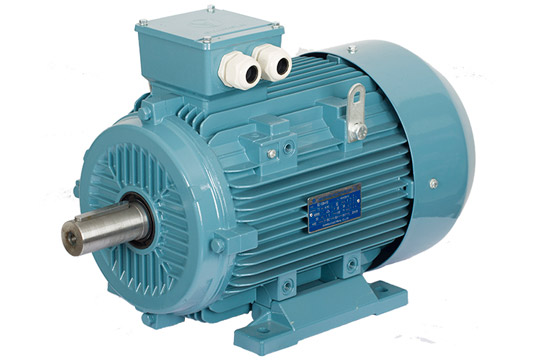The unit of rotation speed is r/m (rpm) per minute and r/s (rps) per second.
① Synchronous speed of the motor
Because the rotation of the induction motor comes from the action of the rotating magnetic field, its speed is the same as that of the rotating magnetic field, so the synchronous speed of the motor refers to the speed of the rotating magnetic field, which is expressed in ns.
Synchronous speed (r/m) for various frequencies and pole numbers
| Pole | 50HZ | 60HZ | Pole | 50HZ | 60HZ |
| 2 | 3000 | 3600 | 6 | 1000 | 1200 |
| 4 | 1500 | 1800 | 8 | 750 | 900 |
② Rated speed of the motor
Rated speed refers to the speed of the motor at rated power. That is, the motor speed at full load, so it is also called full load speed. It is represented by the symbol “n”.

③ Maximum safe speed of the motor
Unless otherwise indicated on the nameplate of Bulletproof Motor, all single-speed three-phase squirrel-cage induction motors with a voltage of 1000V and a frame size of 400 and below should be able to operate safely and continuously within the speed listed in the table below.
| Frame | 2 Pole | 4 Pole | 6 Pole | Frame | 2 Pole | 4 Pole | 6 Pole |
| ≤100 | 5200 | 3600 | 2400 | 225 | 3600 | 2300 | 1800 |
| 112 | 5200 | 3600 | 2400 | 250 | 3600 | 2300 | 1800 |
| 132 | 4500 | 2700 | 2400 | 280 | 3600 | 2300 | 1800 |
| 160 | 4500 | 2700 | 2400 | 315 | 3600 | 2300 | 1800 |
| 180 | 4500 | 2700 | 2400 | 355 | 3600 | 2300 | 1800 |
| 200 | 4500 | 2300 | 1800 | 400 | — | — | 1800 |
Note: When the motor runs above the rated speed, for example, when speed control is applied, its noise and vibration intensity will increase. The motor is required to be finely leveled to meet the acceleration capability above the rated speed. In addition, the life of the bearing may be reduced. Attention should be paid to the refueling interval to replenish the grease and its life.
④ Slip
The stator winding is fed with three-phase alternating current to generate a rotating magnetic field. The rotating magnetic field cuts the rotor winding, and the rotor winding generates an induced current. The induced current generates an electromagnetic force under the action of the rotating magnetic field, which drives the rotor to rotate (the direction of rotation of the rotor is consistent with the direction of the rotating magnetic field. ). Without the influence of external force, the speed of rotor rotation is lower than the speed of stator magnetic field rotation.
Slip is the ratio of the difference between the speed at which the sub-field rotates (synchronous speed) and the speed at which the rotor rotates (rated speed) to the speed of rotation of the stator field. S=(ns-n)/ns×100%.
The slip rate of the motor is generally controlled between 3% and 5%.
Note: The motor mainly refers to the three-phase asynchronous motor
Post time: 2022-02-14











